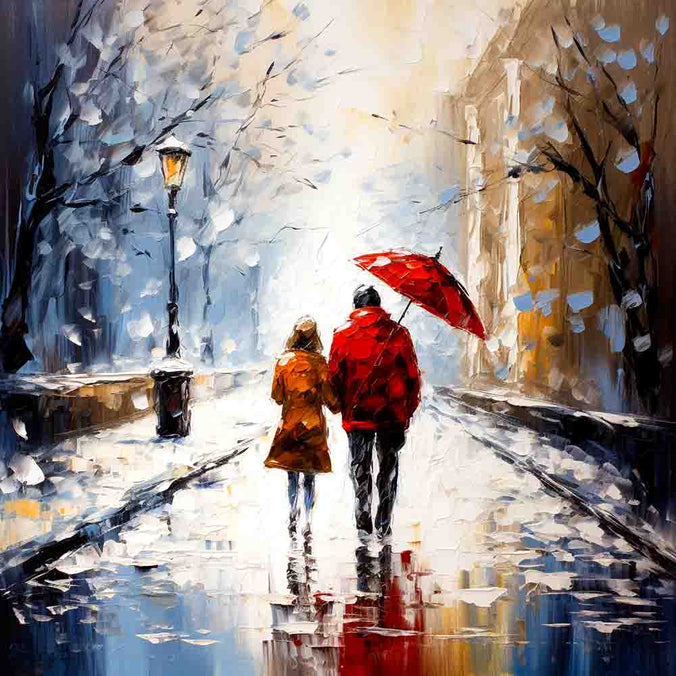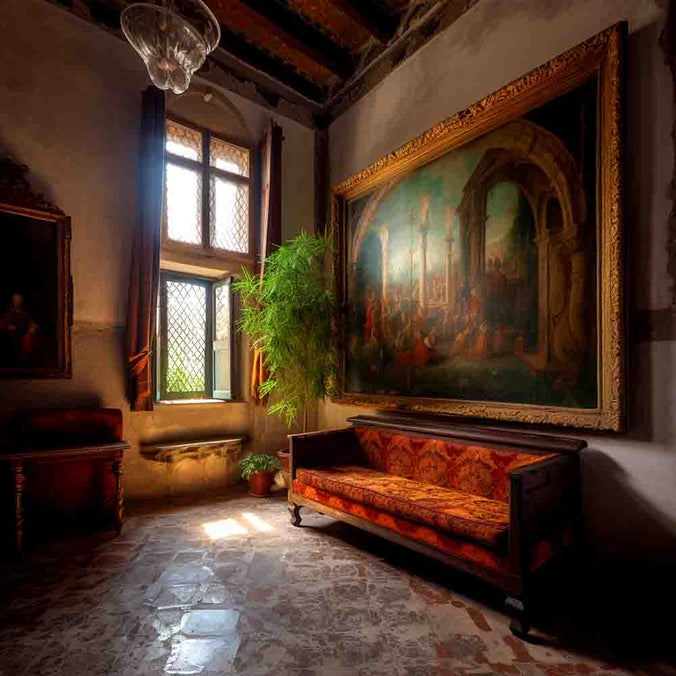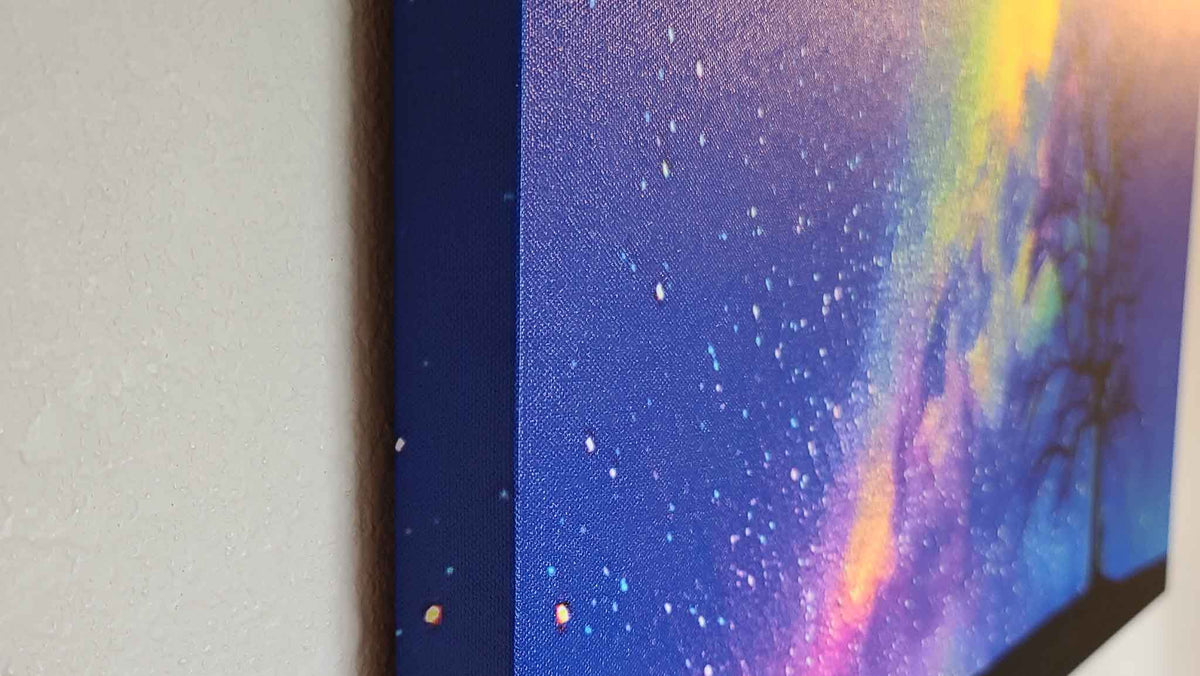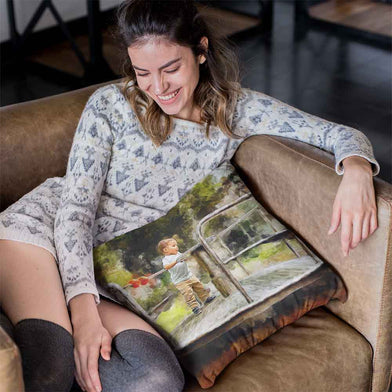The History of Watercolor Painting

The History of Watercolor Painting
Watercolor painting has evolved significantly from its early days as a medium for drawing and sketching. By the 1770s, the first Royal Academy of Arts was established in London, and a hierarchy of art emerged between oil and watercolor. The value of a painting was often determined by its subject matter, with historical subjects being more highly regarded than genre scenes and portraits. This hierarchy left watercolorists in the background, but the 1790s witnessed a new generation of artists reinventing the medium, allowing it to compete with oil in size, effect, and seriousness of the subject matter.
Albrecht Durer
Albrecht Durer, a groundbreaking painter from Nuremberg, Germany, was born in 1471. His works on paper were often intricate and expansive. He studied under both German and Italian humanists, introducing classical motifs into Northern art. Durer also wrote theoretical treatises on perspective and ideal proportions. In 1494, he married Agnes Fey, a local merchant's daughter. His watercolors showcase the countryside and southern Tirol, with compositions displaying remarkable harmony of detail. The unmixed colors in his watercolors suggest depth.
Durer's paintings soon gained fame throughout Europe. After meeting Jacopo de' Barbari in Nuremberg and Venice, Durer began exploring new discoveries about human proportion. He started creating images using watercolor and body color, as well as painting still lifes of animals and meadow sections. One of his most famous paintings, Adam and Eve (1504), demonstrates his mastery of texture and flesh surfaces.
Albrecht Durer was one of the most influential Renaissance artists of his time. Not only was he a prolific painter, but he also wrote and studied philosophy. His watercolors and woodcuts helped establish watercolor painting as a popular medium in Europe, and his works influenced key figures in the Italian Renaissance.
David Cox
The majority of David Cox's paintings are watercolor views on paper. However, by the late 1830s, he had begun to experiment with oil paints. Watercolor is a medium with high transparency, allowing light to reach the white paper substrate and reflect back through the pigmented layers. Cox took advantage of this characteristic to create idealized views of rural life, untouched by industrialization.
Cox studied under John Varley, a well-known watercolorist, in London. He completed many watercolor paintings while taking lessons from Varley. As his career progressed, he began experimenting with oils and created many large oil paintings, including Rhyl Sands, which remains one of his most popular works. However, he did not completely abandon watercolor painting and continued to exhibit in his native country.
David Cox's most famous works are of the Welsh landscape. His watercolors of North Wales capture the rugged mountain scenery of the area. His visits to the region from 1844 to 1856 were regular, and he discovered a wealth of subject matter for paintings.
Cornelius Varley
Cornelius Varley, a British Grandmaster, is credited with popularizing watercolor painting in the late 18th century. He focused his style on landscapes and figures in nature, adopting a more expressive approach than many of his contemporaries. His paintings of the River Thames were popular among British poets and painters of the day.
Despite his success during the East Anglian period, Varley returned to London and began making several sketching trips to Wales. The first trip was in June 1802, accompanied by his brother John and a young architect named Thomas Webster. The next trip was in 1803 with William Havell and the third in 1805 by himself. He produced most of his most important work during these three trips.
Varley had previously worked as a jeweler and inventor, creating optical instruments. As a child, he dreamed of pursuing an artistic career. Throughout his life, he worked to improve the quality of life for ordinary people. He was also an accomplished inventor, creating innovative methods for producing optical instruments and drawing landscapes.
Samuel Prout
Samuel Prout was a British painter and lithographer who contributed to the rise of the landscape school in London. Prout produced numerous English landscapes and picturesque architectural illustrations. He also wrote several art handbooks based on his travels throughout Europe.
Prout's most popular works depicted old buildings. He exhibited at the Royal Academy and the Old Watercolour Society and published numerous volumes of prints. His paintings evoked a sense of decay, which many early artists had not captured. He was also known for the wiggly lines that he used to convey the crumbling surfaces of buildings.
In the mid-nineteenth century, watercolors began to gain recognition as a mature painting medium. The Royal Academy first classified watercolors as a type of drawing in its annual exhibitions. These works were often hung in the same dimly lit room with marbles and sculptures.
In the early nineteenth century, watercolor painting gained a wider audience as artists sought to show their works to a broader public. Watercolor painting clubs began to emerge in England, with the first one founded in 1761 as an exhibiting arm of the Society of Arts. These clubs held exhibitions and encouraged the development of watercolor painting.
Winslow Homer

Winslow Homer, born in 1836, worked in various mediums, including watercolors. He was an accomplished painter of the sea, often painting with a strong sense of immediacy and observation. He was also interested in depicting working people, and his paintings are a great example of this, showing how art can reflect the everyday struggles of humans in an often uncaring world.
Homer's subject matter reflected many of the concerns of nineteenth-century artists, including those influenced by European ideas. However, he was also inspired by the Barbizon School, an American landscape style that arose in the 1860s. He would also have come across the pre-Impressionist works of Auguste Renoir, who was another inspiration. Both Homer and the Barbizon School shared an interest in the qualities of lighting.
Winslow Homer was a self-taught artist who created numerous paintings in the 19th century. His best-known works were landscape paintings. Although he was self-taught, he is considered a key figure in American art.
Paul Cezanne
One of the key features of Cezanne's style is the lack of linear perspective. His paintings are more expressive and less realistic, using color and directional brush marks to describe the inner structure. He also used less pigment than most painters, and his brushstrokes varied in size and speed. His paintings are often difficult to categorize.
Many of his watercolor paintings depict views in Aix-en-Provence, a town in southern France. Although he was born in Paris, he spent most of his life in the south of France. He built a studio at Les Lauves outside Aix in 1902 and worked there until his death in 1906. Cezanne's favorite place to paint was the nearby Bibemus quarry.
During this period, Cezanne experimented with different techniques, such as applying color by centrifugal force, which left the central areas of objects white. He also painted many still lives without using linear perspective, focusing instead on form.
After his father died in 1886, Paul Cezanne inherited a large sum of money. In 1886, he married Marie-Hortense and began to establish himself as an independent artist. As the years passed, his work gained favor with the emerging symbolist movement, which sought to counteract realism in art. Cezanne's work was shown at the Universal Exhibition in 1889, and in Brussels in 1890.
Vincent van Gogh
The history of watercolor painting can be traced back to the nineteenth century when painters such as Vincent van Gogh were making a splash. After studying art in Antwerp, he moved to Paris with his brother Theo, a prominent art dealer. In Paris, he became inspired by the avant-garde works of artists like Paul Gauguin and Emile Bernard, and his artistic style began to take on a new expression.
In his youth, Van Gogh spent many hours drawing and sketching. This was one of his primary ways to study form and movement and channel his own depression. Though his drawings were often without color, they can still be appreciated. Vincent used pencil, red chalk, blue chalk, and black chalk to create his first drawings, and he used various types of paper.
During the years 1888 and 1889, Van Gogh began to attract critical attention. His works were featured at the Salon des Indépendants in Paris and Les XX in Brussels. His work was lauded by Gauguin, who wrote him a letter about his work. During this time, Aurier published the first full-length article on Van Gogh. In his article, Aurier aligned Van Gogh's art with the Symbolist movement, highlighting his intensity and originality.
The Continued Evolution of Watercolor Painting
Throughout the 20th century and into the 21st century, watercolor painting has continued to evolve as artists experiment with new techniques and styles. The medium has become increasingly popular among both professional artists and hobbyists, thanks to its versatility and accessibility.
Modern watercolorists are no longer restricted by traditional styles and methods. Instead, they freely explore abstract and experimental approaches, pushing the boundaries of what can be achieved with watercolors. Digital technology has also played a role in the evolution of watercolor painting, with artists blending traditional techniques with digital tools to create unique and innovative works of art.
The history of watercolor painting is a rich and diverse tapestry, reflecting the creative spirit of countless artists over the centuries. From its humble beginnings as a medium for sketching and drawing, watercolor has grown into a respected and revered art form. The contributions of influential painters such as Albrecht Durer, David Cox, Cornelius Varley, Samuel Prout, Winslow Homer, Paul Cezanne, and Vincent van Gogh have helped shape the medium into what it is today. As we look to the future, the possibilities for watercolor painting are virtually limitless, ensuring that this vibrant and ever-evolving art form will continue to captivate and inspire generations to come.
Leave A Reply
Your email address will not be published. Required fields are marked *






